Lower Control Arm Ball Joint Replacement RWD
Removal Procedure
Tools Required
| • | J 9519-D Ball
Joint Remover and Installer Set |
- Raise the vehicle. Support the frame with suitable safety stands.
- Remove the tire and wheel assembly. Refer to
Wheel Removal
in Tires and Wheels.
Caution: Floor jack must remain under the lower control arm during
removal and installation to retain the lower control arm in position. Failure
to do so could result in personal injury.
- Place a floor jack under the control arm spring seat. Raise the jack
in order to support the control arm.
Notice: Support the caliper with a piece of wire to prevent damage to the brake
line.
- Remove the brake caliper. Refer to
Brake Caliper Replacement
in Disc Brakes.
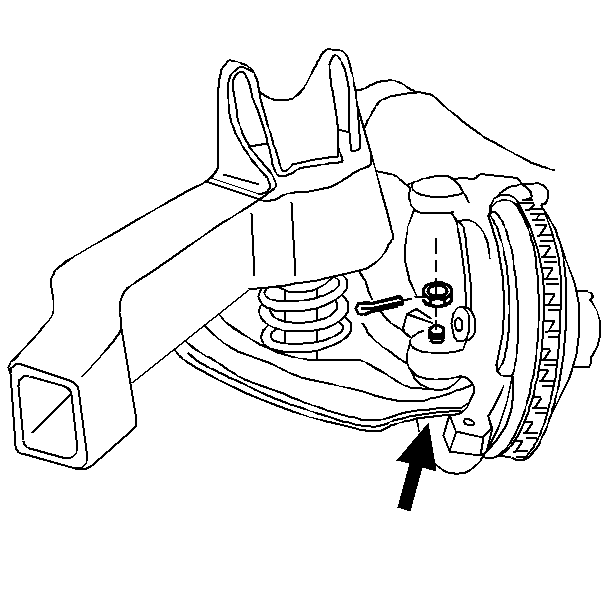
- Remove the cotter pin and the nut.

- Break the ball joint loose from the knuckle using
the J 23742
.
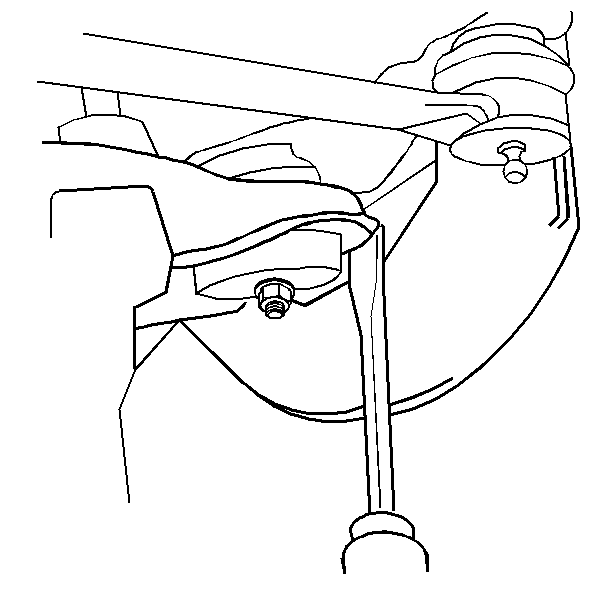
Important: Place a wooden block between the frame and the upper control arm in
order to block the knuckle assembly out of the way.
- Remove the lower control arm out of the opening in the splash shield.
Use a putty knife or a similar tool in order to guide the control arm past
the splash shield.
- Remove the grease fittings.
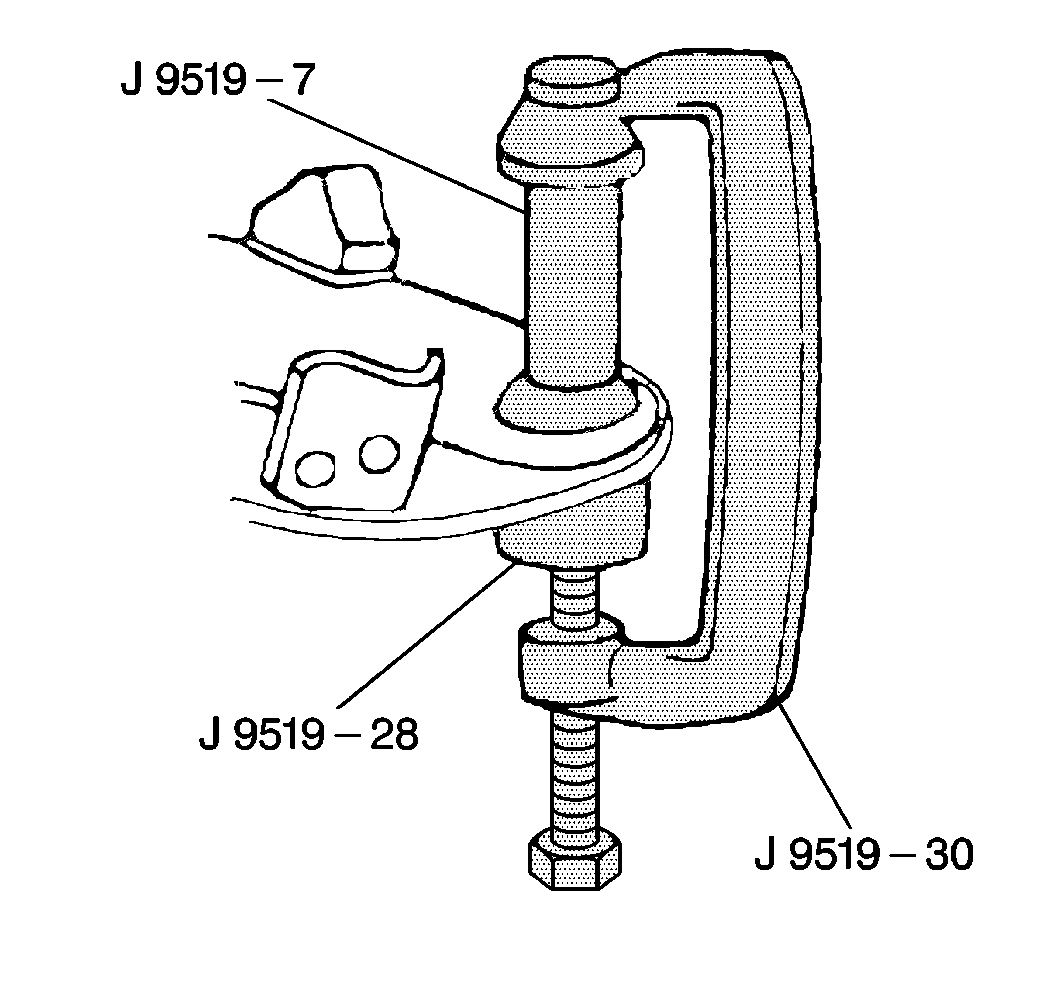
- Remove the lower ball joint from the lower control
arm using the tools as shown. Replace the parts as necessary.
- Inspect the tapered hole in the steering knuckle. Remove any dirt.
If the tapered hole is out of round, deformed or damaged, replace the knuckle.
Installation Procedure
Tools Required
J 9519-D Ball Joint
Remover and Installer Set
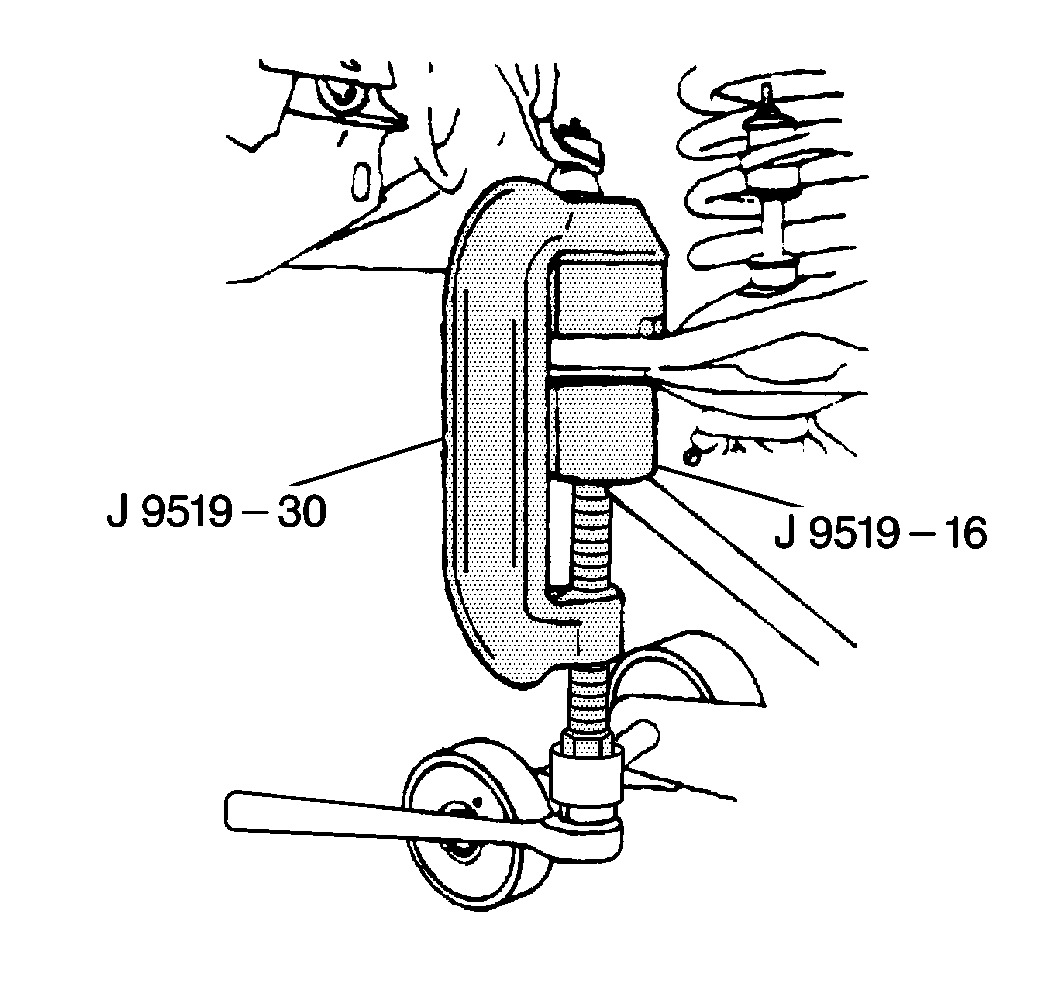
- Install a new ball joint into the lower control
arm.
| 1.1. | Press in the ball joint using the tools as shown. The ball joint
will bottom on the control arm. |
| 1.2. | Locate the grease fitting facing inboard. |

- Install the ball joint stud into the steering
knuckle.
Notice: Use the correct fastener in the correct location. Replacement fasteners
must be the correct part number for that application. Fasteners requiring
replacement or fasteners requiring the use of thread locking compound or sealant
are identified in the service procedure. Do not use paints, lubricants, or
corrosion inhibitors on fasteners or fastener joint surfaces unless specified.
These coatings affect fastener torque and joint clamping force and may damage
the fastener. Use the correct tightening sequence and specifications when
installing fasteners in order to avoid damage to parts and systems.
- Install the stud
nut onto the stud.
Tighten
Tighten the nut to 113 N·m (84 lb ft). Tighten
in order to align the slot in the stud nut with the hole in the stud.
- Install a new cotter pin to the stud.
- Install the grease fittings.
- Lubricate the ball joint until grease appears at the seal.
- Install the brake caliper. Refer to
Brake Caliper Replacement
in Disc Brakes.
- Install the tire and wheel assembly. Refer to
Wheel Installation
in Tires and Wheels.
- Lower the vehicle.
- Check the front wheel alignment. Refer to
Wheel Alignment Specifications
in Wheel Alignment.
Lower Control Arm Ball Joint Replacement S4WD
Removal Procedure
- Raise the vehicle. Support the vehicle with safety stands.
- Remove the tire and wheel. Refer to
Wheel Removal
in Tires and Wheels.
- Disconnect the cotter pin from the ball joint stud.
| 3.1. | Loosen, but do not remove, the stud nut on the ball joint stud. |
| 3.2. | Loosen the stud from the knuckle. |
- Remove the ball joint to steering knuckle nut.
- Remove the ball joint from the knuckle. Refer to
Front Wheel Hub, Bearing, and Seal Replacement
.
| 5.1. | Tip the knuckle out and toward the rear of the vehicle. |
| 5.2. | Suspend the knuckle from the upper control arm in order to prevent
straining the brake line. |
- Remove the rivets from the ball joint.
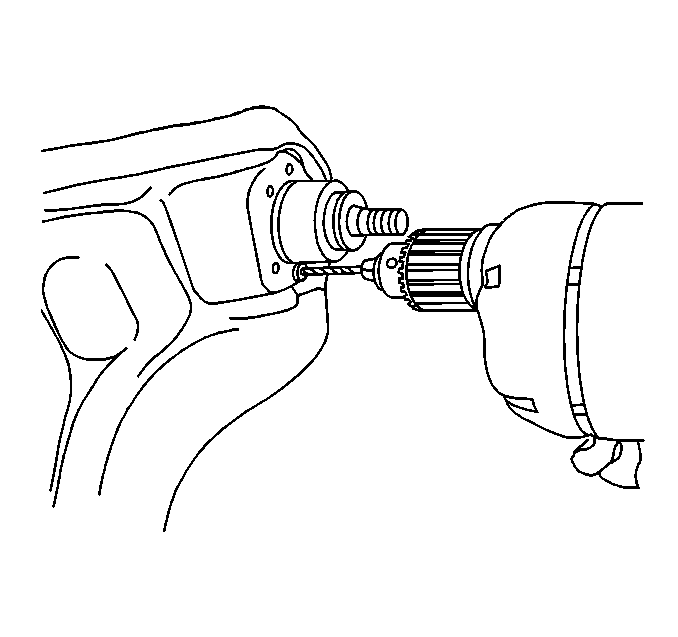
- Use a 3.175 mm (1/8 in) drill
to cut a 6.35 mm (¼ in) deep hole in the center of each
rivet.
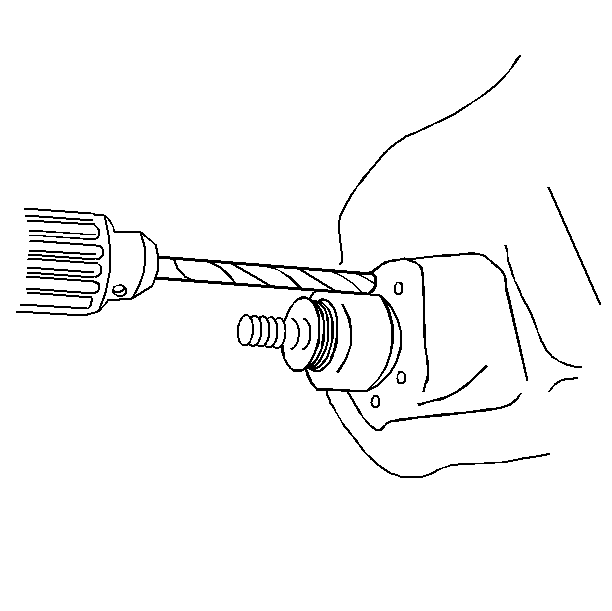
- Drill the rivet heads away using a 12.7 mm
(½ in) drill.
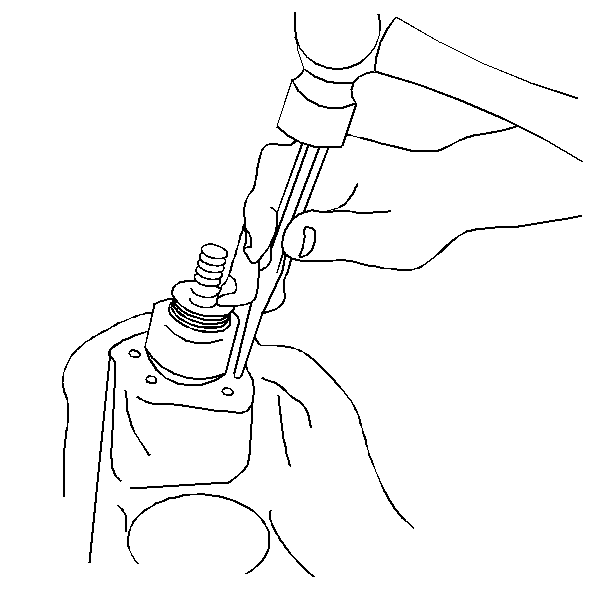
- Remove the rivets using a pin punch.
- Remove the ball joint.
Installation Procedure
- Install the ball joint to the control arm.
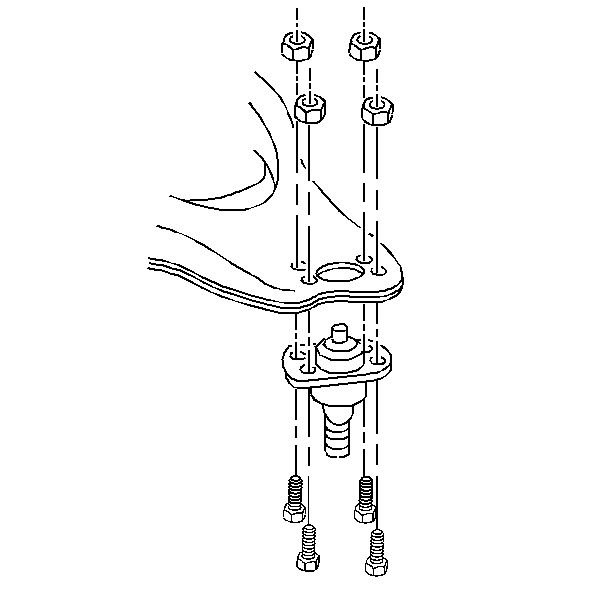
Notice: Use the correct fastener in the correct location. Replacement fasteners
must be the correct part number for that application. Fasteners requiring
replacement or fasteners requiring the use of thread locking compound or sealant
are identified in the service procedure. Do not use paints, lubricants, or
corrosion inhibitors on fasteners or fastener joint surfaces unless specified.
These coatings affect fastener torque and joint clamping force and may damage
the fastener. Use the correct tightening sequence and specifications when
installing fasteners in order to avoid damage to parts and systems.
- Install the bolts
and the nuts to the ball joint.
Tighten
Tighten the nuts to 23 N·m (17 lb ft).
- Install the ball joint to the knuckle.
Notice: Use the correct fastener in the correct location. Replacement fasteners
must be the correct part number for that application. Fasteners requiring
replacement or fasteners requiring the use of thread locking compound or sealant
are identified in the service procedure. Do not use paints, lubricants, or
corrosion inhibitors on fasteners or fastener joint surfaces unless specified.
These coatings affect fastener torque and joint clamping force and may damage
the fastener. Use the correct tightening sequence and specifications when
installing fasteners in order to avoid damage to parts and systems.
- Install the ball
joint to steering knuckle nut.
Tighten
| • | Tighten the nut in order to align the cotter pin. Do not tighten
the nut more than 1/6 turn. |
| • | Tighten the nut to 108 N·m (79 lb ft). |
| • | Tighten the upper nut to 83 N·m (61 lb ft). |
- Install new cotter pin. Bend the pin ends against the nut.
- Install the tire and the wheel. Refer to
Wheel Installation
in Tires and Wheels.
- Lower the vehicle.
- Check the front wheel alignment. Refer to
Wheel Alignment Specifications
in Wheel Alignment.










